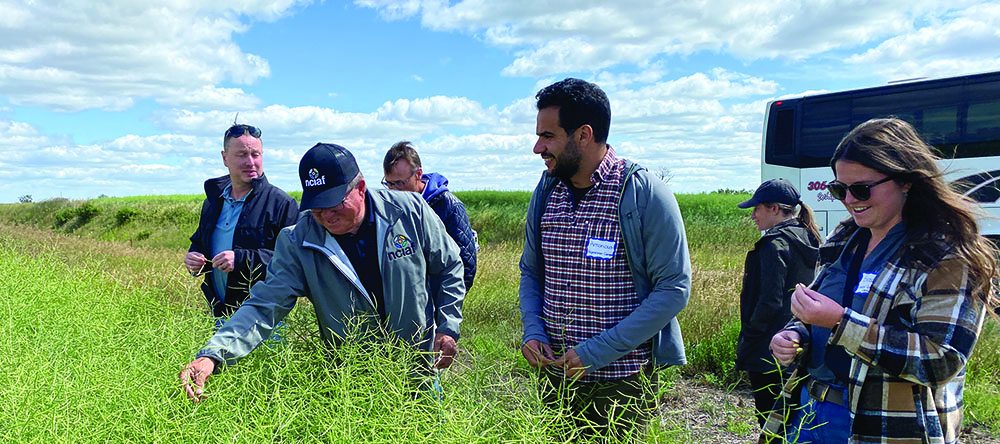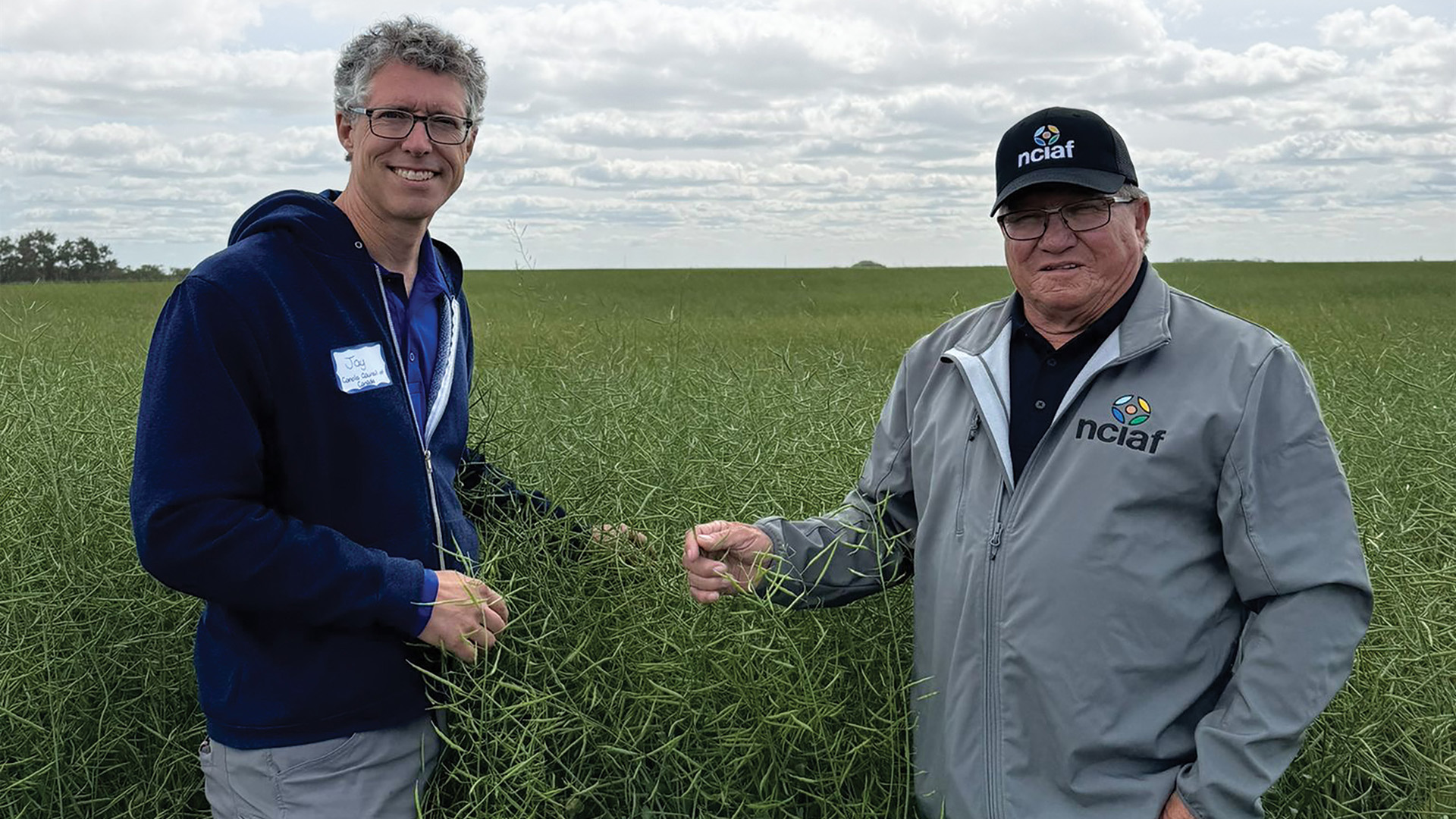Reaching out to Indigenous farmers
One of my favourite moments on the National Circle for Indigenous Agriculture and Food’s “first annual” bus tour in August was watching Justice Acoose and Tianna Peepeetch take a moment together, away from the rest of the tour, to share their awe of Prairie crops. “I just love plants,” Peepeetch said during a stop at the Indian Head Agricultural Research Foundation. I had shown them canola, mustard and lentil plants, and Peepeetch made this comment later while looking at a field of canaryseed, “People don’t realize the opportunities in agriculture.”
Acoose is the communications specialist with the National Circle for Indigenous Agriculture and Food (NCIAF) in Regina, Saskatchewan. Peepeetch is taking business administration at First Nations University of Canada, and was a summer intern for NCIAF, working with Acoose.
The National Circle is a new organization based in Regina and serving all of the Prairies, with the purpose to show Indigenous people the opportunities in agriculture. As it says on the website (nciaf.ca), the Indigenous-led, non-profit organization is dedicated to the advancement of reconciliation in the agriculture industry and the creation of a national dialogue for Indigenous agriculture.
In some cases, Indigenous agriculture will be more traditional, including bison ranching, collection and cultivation of native plants, and traditional Indigenous practices, such as intercropping and silviculture. However, one theme from the bus tour was a strong desire to also work within mainstream agriculture on the Prairies.

Terry Lerat is reconciliAG advisor for NCIAF and runs 4C Farms at Cowessess First Nation, north of Broadview, Saskatchewan. Lerat was on the bus tour and the tour stopped at his farm site and a few of his fields.
4C Farms started with 25 cows and a quarter section of land. In 2021, Lerat went to the Cowessess chief and council and asked, “would you let us farm our best land?”. The goal, he says, “is to utilize our land to improve on the quality of life for our First Nations.”
Cowessess has 17,000 acres under cultivation on its main reserve and another 85,000 or so in other blocks. Lerat would like 4C Farms to ultimately farm the whole 17,000 acres on the main reserve. The farm cropped 6,000 acres in 2024. This was also the first year 4C Farms did all the work with Indigenous management and labour. “This proved to me, and to our chief and council, that we can do this ourselves,” he says.
“This proved to me, and to our chief and council, that we can do this ourselves.”
— Terry Lerat
Lerat head-hunted skilled workers to run the farm’s modern fleet of equipment, which now includes two X9 John Deere combines. “I know those two combines are too much for 6,000 acres, but they’re probably the right capacity for 10,000,” he says. He expects the farm will grow quickly.
Lerat has high praise for the help and support he gets from local businesses, including the John Deere dealership in Yorkton, Viterra in Grenfell, Stone X in Brandon, and Hometown Co-op, which provides ag inputs and agronomy service.
As the farm grows, Lerat plans to bring younger people from Cowessess into the business. “The problem,” he says, “is that most First Nation people are three generations removed from farming.” That makes it a challenge to get young people interested. “We need to bring agriculture back into the classroom,” he says. “The opportunities are so great, it’s crazy.”
Peepeetch says her “mission is to get our youth excited about agriculture.” Acoose’s LinkedIn profile says: “Passionate supporter of reigniting Indigenous peoples and communities’ involvement in agriculture, agribusiness and food sovereignty.” One of Acoose’s goals is to promote programs for youth and education.
CIAF aims to build Indigenous capacity for agriculture through awareness of opportunities, knowledge exchange, education, and skills development. For example, NCIAF assisted with Ochapowace Nation’s community garden. “The garden has a youth representative who is currently studying at the First Nations University of Canada,” Acoose says. “And the lead gardener and a member of Ochapowace is particularly passionate about engaging the youth with the garden.”
Sonia Gardypie is lands manager at Mosquito, Grizzly Bear’s Head and Lean Man First Nations in western Saskatchewan. She was on the tour along with her lands administrator Jamie Lewis. Lewis is taking lands manager training in Saskatoon.
Gardypie has a lot of energy and enthusiasm, and is guiding her First Nations in many new projects. For example, Mosquito First Nation will soon receive delivery of a herd of huge Yellowstone Bison. Gardypie wants to see First Nation farming succeed in community with the whole Prairies agriculture ecosystem. “We’re all part of this together,” she says.
The CCC has a goal to increase knowledge transfer to indigenous researchers and farmers. This work is funded in part through the Canola AgriScience Cluster, a five-year research program funded through Agriculture and Agri-Food Canada’s Sustainable Canadian Agricultural Partnership. Attending the NCIAF tour allowed CCC staff to make initial connections that will help deliver canola research results to indigenous farmers.





